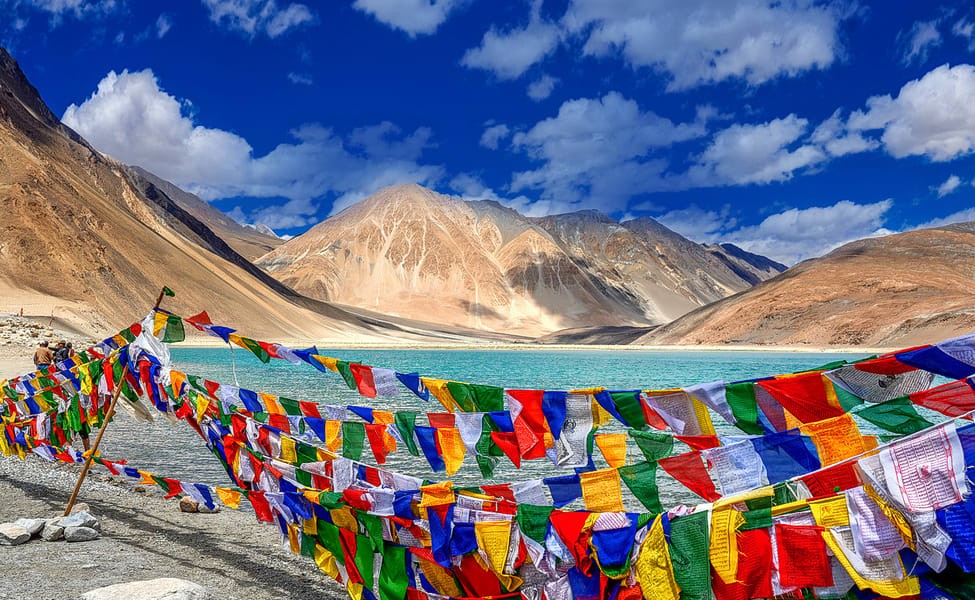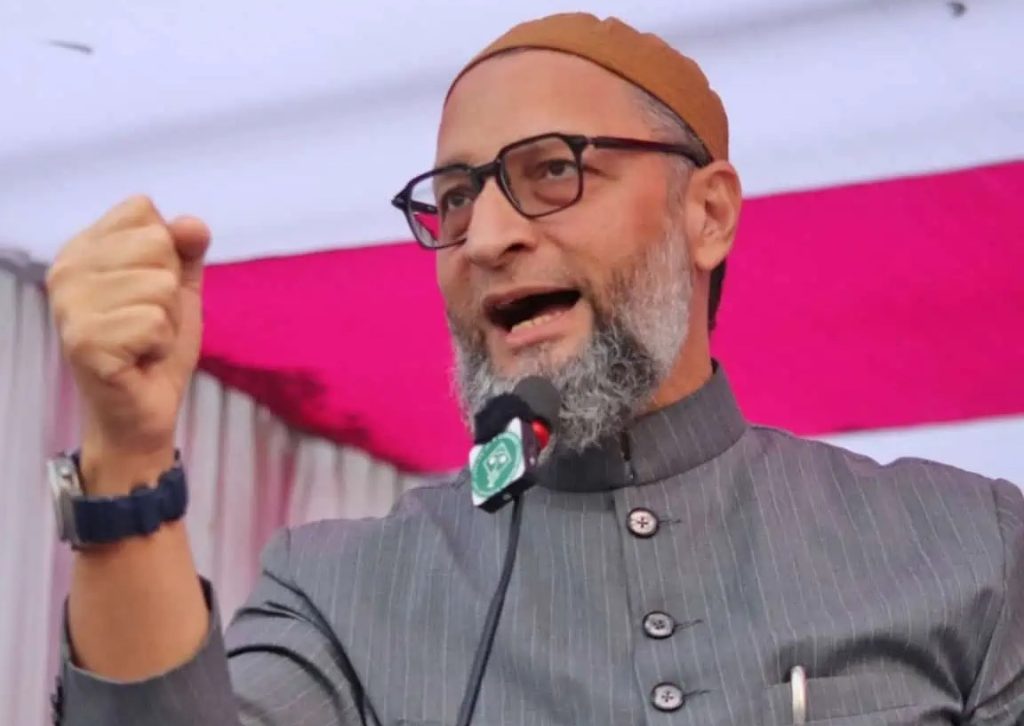Tridib Raman
In Ladakh, the flame of public dissatisfaction is appearing in different forms. Just when the agitation of “Gen Z” seemed to be cooling down somewhat, suddenly the arrest of Ramon Magsaysay award winner Sonam Wangchuk has worked to ignite the sleeping fire. Educationist, innovator, and environmentalist Sonam is a well-known face of Ladakh. Once he used to be counted among the special admirers of PM Modi, but when he made a frank comment on the issue of China, since then he came into the “hit list” of the central government. On one side where the PM was saying with reference to China that “no one came, no one went,” at that very time Wangchuk accused China of occupying land in Ladakh. Now, questioning his patriotism, the central government has arrested him and sent him to Jodhpur jail. Actually, for quite some time Wangchuk, along with the Leh Apex Body (LAB), was demanding for Ladakh statehood and protection under the Sixth Schedule of the Constitution. To give voice to this very demand, he had announced a 35-day fast and had indeed sat on fast. But when the “Gen Z” movement in Ladakh took a violent and aggressive form, then he was compelled to take back his fast. He also appealed to the new generation to maintain peace, but even then the heart of the Centre did not melt. A sword of investigation was hung over his NGO and he was put behind bars. Meanwhile, Thupstan Chhewang, who had been BJP MP from here twice and president of the LAB, had to resign from the leadership position of the Apex Body respecting public emotions, at a time when the central government was saying together with the LAB and the Kargil Democratic Alliance that they were considering giving Ladakh statehood under constitutional rights. It is said that at the behest of the central government, Chhewang again joined this Apex Body, although his resignation from BJP had taken place in 2018. It should be remembered that Congress leader Nawang Rigzin gave his resignation from the Leh Apex Body saying that “people connected with political parties should not be in this institution.” Meanwhile, the central government was continuously ignoring Sonam Wangchuk. He kept asking for time to meet the Home Minister, but time kept passing and he did not get time to meet the Minister. After this, Wangchuk, demanding separate statehood and making unemployment and environmental concern in Ladakh the issues, announced a 35-day fast, which got full support from the local “Gen Z.” As soon as Sonam stepped outside of the Apex Body, the central government fixed a date in October for talks with its members, but the people of Ladakh are still seeing Chhewang’s new presence in this institution with suspicion.
Why Does China Have Its Eyes on Ladakh?

What is happening in Ladakh is considered to be under the full watch of China. However, the people of Ladakh never like China; the public sentiments here are more aligned with the Tibetan people rather than with China. In any case, in our border regions, wherever dissatisfaction grows, China sees it as an opportunity. And Ladakh’s borders touch both China and Pakistan. Therefore, this is strategically extremely important for India. On just the 15th day of Sonam Wangchuk’s 35-day hunger strike, violence flared up there, in which 4 innocent people lost their lives. The Centre considered Sonam Wangchuk, in one way or another, responsible for the rising tensions in Ladakh and he was arrested and sent to jail.
What is Behind the Discontent?
The violent protests that took place in Ladakh in recent days can also be attributed to “crony capitalism.” In fact, in the year 2018, Sonam Wangchuk was given 135 acres of land in Phey (Leh) on lease for 40 years. There, Sonam laid the foundation of the “Himalayan Institute of Alternate Learning.” The aim of this institution was to develop education—especially environmental education and sustainable mountain living—as a model. But when Wangchuk changed his tone toward the government, in May 2019 the administration canceled this lease, citing violation of agreed terms. After this, in Pang, Devring, and Kharnak, a “wind, solar, and battery solar project” of 13 gigawatts was given the green signal. The estimated cost of this project is said to be 20,700 crore rupees. It is understood that this project could be handed over to one of the government’s favoured industrial groups.
Owaisi’s Attack on the Lalu Family

Bihar stands at the doorstep of elections, and the biggest political family here is caught in internal tussles reaching their peak. This time, when Tejashwi Yadav launched the “Bihar Adhikar Yatra,” seated in front on his chariot was his closest aide Sanjay Yadav—whereas until now it was usually seen that this place remained reserved for a member of the Lalu family itself. Lalu’s daughters Misa Bharti and Rohini Acharya gave much importance to this matter. Tejashwi’s brother Tej Pratap had already stepped outside the family to form his new political party. Now even AIMIM chief Asaduddin Owaisi, without taking Tejashwi’s name, has opened a front against him. He says, “I have come from Hyderabad, not from the moon.” Owaisi taunts, “If a person from Haryana (Sanjay Yadav) can become Rajya Sabha MP from Bihar and no one has a stomachache, then I too come from Hyderabad.” It should be noted that Owaisi made this remark during his four-day Seemanchal tour, in a Muslim-majority area of Kishanganj. The four districts of Seemanchal—Purnia, Araria, Katihar, and Kishanganj—have the highest Muslim population and are considered strongholds of the Mahagathbandhan. But the way crowds, especially of Muslim youth, were gathering in Owaisi’s tour, it is in a way a danger bell for RJD-Congress. In every gathering, Owaisi also told Muslims: “We too wanted to support the Mahagathbandhan in the fight against the Sangh and BJP. Our Bihar president Akhtul Iman wrote three letters to Lalu-Tejashwi expressing the desire to join the INDIA bloc, but no reply came. We had asked for only six seats.” It should be remembered that in the 2020 Bihar elections, five candidates of Owaisi’s party had won.
Differences Within the NDA Are Not Few
The BJP wants to make the alleged population explosion (in a particular community) and the infiltrator crisis into a big election issue in the upcoming Bihar elections. But its biggest partner in state politics, the JD(U), does not agree with this idea, because Nitish’s party is ideologically based on secular socialist politics. At the same time, Chirag Paswan also wants to emerge as a major champion of minorities. So, for the sake of his undisputed image, he wants to keep himself and his party away from the politics of polarization. The BJP had made the alleged illegal infiltration a major election issue in the Jharkhand elections held last year too, but it did not get any significant electoral benefit from it. This time, however, the opposition is especially aggressive against the BJP-Sangh in Bihar. Regarding the “Special Intensive Revision” (SIR) of the voter list, both Rahul and Tejashwi are being very attacking on the BJP and are also accusing it of stealing votes. The BJP is focusing entirely on the polarization of votes, especially in Seemanchal, because here there are Muslim voters in large numbers, due to which until now the Mahagathbandhan has been able to give them equal competition.
Bihar Mahagathbandhan: Seat-Sharing Disputes Intensify
The Mahagathbandhan is seeing intense tussles over seat-sharing. The Congress has made it clear to Tejashwi that compared to the 2020 elections (when Congress contested 70 seats), it will contest on slightly fewer seats this time (between 55 and 60), but whatever seats it contests should be winnable ones. VIP leader Mukesh Sahani appears to be swinging between positions, at times agreeing to contest fewer seats, and at other times reviving his earlier demand for 50 constituencies. Additionally, Sahani has placed a new condition before Tejashwi: “If the Mahagathbandhan forms the government in Bihar this time, I should be made Deputy Chief Minister.” However, it is believed that Tejashwi has already promised Rahul that “he will make one Congress leader Deputy Chief Minister in his government.” Meanwhile, RJD demands that Tejashwi be declared the Chief Ministerial face. But the Congress responds, “Why the rush? First, the seat-sharing in the alliance should be finalized properly.”
